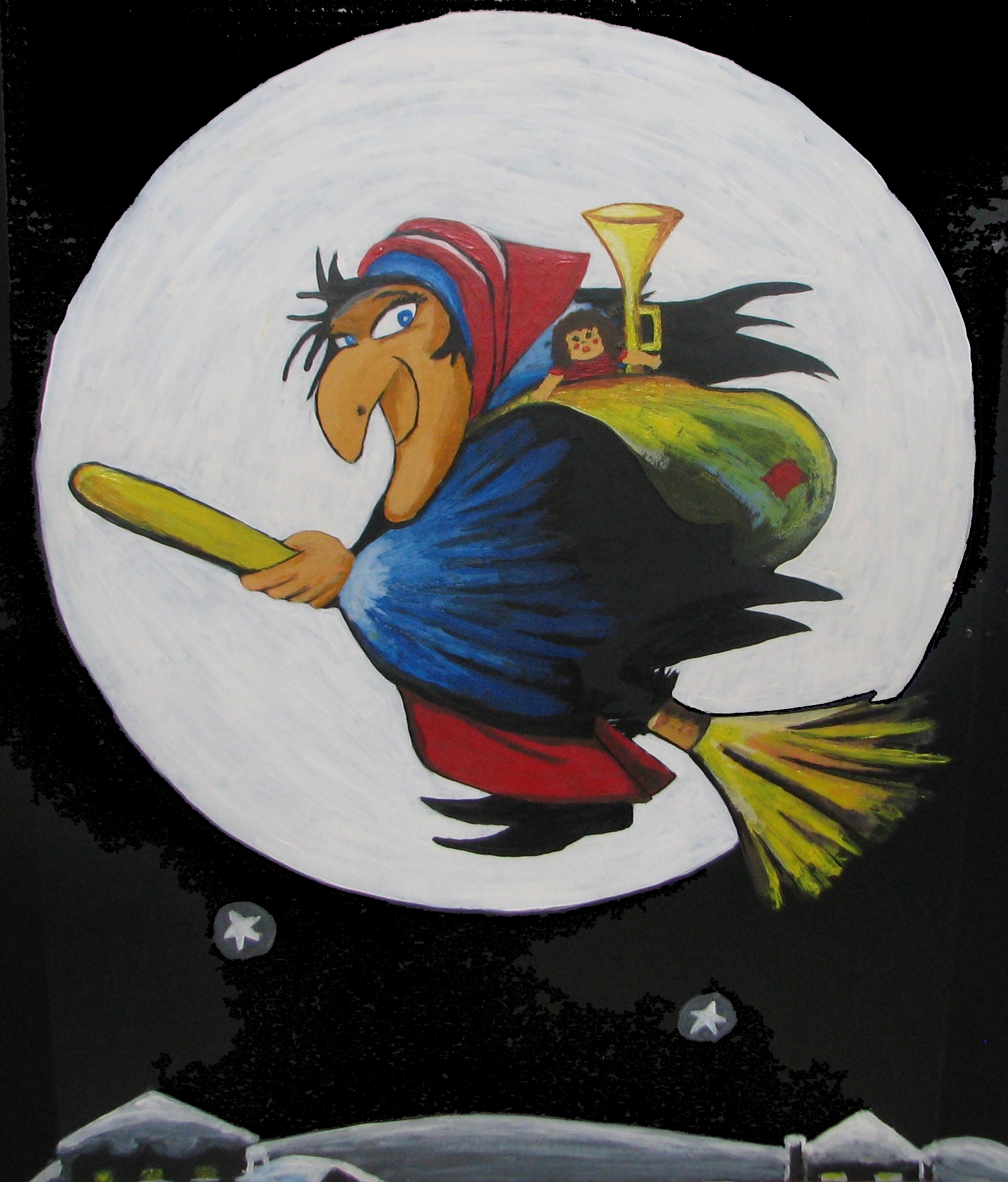One of the great Christmas traditions in Italy is the Feast of La Befana which is celebrated on January 6, the 12th day of Christmas , also known as the Epiphany and the Feast of the Three Kings. It is just as important to the Italians as Christmas itself. Many towns hold parades and festivals, along with bonfires to burn away bad memories of the old year; panettone and focaccia is eaten along with a glass of mulled wine.
Legend has it that the three Kings, on the night between the 5th and 6th of January, went to visit the baby Jesus. They walked all night carrying presents with them. They became lost and knocked on the door of an old woman’s house, the house of La Befana. They asked Befana if she knew the way to Bethlehem and invited her to go with them to find Jesus. Befana gave them the directions but she refused to go because she had lots of things to do at home. After that, however, she regretted saying no to their request so she made lots of cakes and set off looking for the three Kings but never found them. She offered cakes to all the children she met on her way, hoping one of them was the baby Jesus. Since then, Befana rides around on her broom which she had used that night to clean her house and brings gifts to all the children hoping that one of them might be the baby Jesus, but leaves coal or ashes to those children who were naughty throughout the year. She also uses her broom to tidy up the houses she visits and if she finds anyone awake, she bops them on the head with her broom because she doesn’t want to be seen by anyone – this of course helps in making all the children go to bed early!
The legend of La Befana has its roots in ancient Roman paganism. The word Befana is a variation of the word Epifaneia, the Greek word meaning “appearance” or “divine apparition”. In ancient Rome, the 12th day after the winter solstice, which traditionally was December 25, was celebrated as a sort of rebirth when Diana, the goddess of the hunt and of nature, would go around blessing the land and making it fertile so that crops would then start to grow underground, symbolizing the death of the old year (winter) and the birth of the new year. In another variation, it was Strenia, the Roman goddess of the new year and of good health, that was celebrated. It was in her name that the custom of giving a gift and wishing a happy new year became a tradition.


